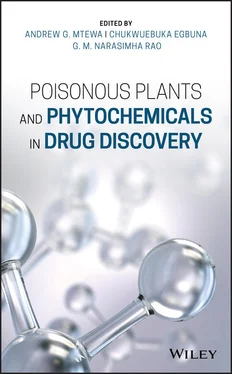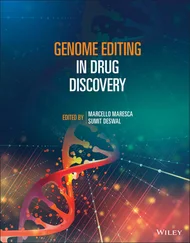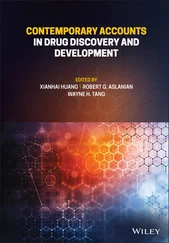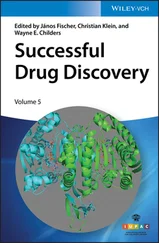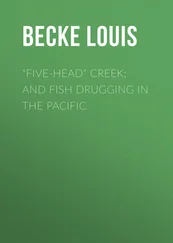Alrashedy and Molina [64] conducted a phylogenetic analysis of 126 traditionally used psychoactive plants that indicates multiple ethnobotanical origins. The plant species documented were also used for several medicinal purposes. Rätsch [66] presented a detailed account of psychoactive plants. Some of the well‐known psychoactive plant species with medicinal, recreational, and other purposes include Cannabis spp. (marijuana), which has hallucinogenic, stimulant, antianxiety, antidepressant, sedative, analgesic, and aphrodisiac properties; Atropa belladonna (belladonna), which has hallucinogenic, stimulant, sedative, and aphrodisiac properties; and Papaver somniferum (opium poppy), Datura spp., and Mandragora spp. (mandrake), which all have hallucinogenic, sedative, analgesic, and aphrodisiac properties. In addition, Catha edulis (khat) has stimulant, antidepressant, and aphrodisiac properties.
Some plants containing psychoactive substances should be classified as harmful drugs since chronic administration has been linked to addiction and cognitive impairment [65]. Not much is known about the toxicity of many of the psychoactive plant species, mainly because of the limited number of studies conducted on their toxicity. A case in point is Datura stramonium , in which all parts are toxic. The plant contains a mixture of anticholinergic alkaloids such as atropine, hyoscyamine, and scopolamine, which are mainly responsible for its neurotoxic and hallucinogenic effects [67]. Datura has a narrow therapeutic window, implying a small difference between the active and lethal dose. It has been widely documented as a cause of accidental poisoning, particularly in contaminated food [68]. Another example is C. edulis , the consumption of which has been associated with several cases of acute liver failure and autoimmune hepatitis [69].
1.9 Poisonous Plants in Warfare and Bioterrorism
Bioterrorism refers to the use of biological agents to inflict disease and/or death on humans, animals, or plants by a political or religious group or cult to achieve a political or ideological objective [70, 71]. Such agents include some bacteria such as Bacillus anthracis (anthrax), viruses such as variola virus (smallpox), rickettsiae, fungi, or biological toxins such as ricin. For the agent to be used successfully, it must first be “weaponized,” or produced in sufficient quantities in relatively stable and easily disseminated forms [70]. Therefore, human populations, crops, and livestock are considered possible bioterrorist targets [70]. Concerns over the use of biological as well as chemical weapons have increased recently. In fact, bioterrorist incidents have increased markedly since 1985 [71], with attempted uses of ricin by various groups, especially in the USA [72]. According to Balali‐Mood et al. [73] there was a 10‐fold increase in the number of published articles following the terrorist attacks in the USA on 11 September 2001.
Ricin is a toxalbumin derived from the seeds of the poisonous plant Ricinus communis (castor bean; family Euphorbiaceae). Ricin acts by inhibiting protein synthesis and is one of the most toxic biological agents known. Ricin is classified as a category B bioterrorism agent and a schedule 1 chemical warfare agent according to the US Centers for Disease Control and Prevention [74]. It can be extracted from castor beans and purified. It is stable under ambient conditions and is readily accessible and relatively easy to extract. The fact that ricin has been used previously in high‐profile assassination cases – such as that of Georgi Markov, a leading communist dissident exiled in London, in 1978 [75, 76] and similar assassination attempts with ricin elsewhere [71] – has contributed to its publicity. On a larger scale, Iraq developed a weapons of mass destruction program between 1985 and 1991, in which approximately 10 L of concentrated ricin solution was produced for field testing [77]. Schep et al. [78] have, however, argued that although ricin is deadly it is not suitable as an agent of bioterrorism for a large population since a substantial mass of powder needs to be extracted, formulated, and produced in the right particle size to target the relevant parts of the lung to be fatal. Additionally, the facilities for the large‐scale manufacture of ricin are not available to terrorists. Ricin has also been used for suicide [8].
In 1975, the Biological and Toxin Weapons Convention was ratified by several countries. In spite of the agreement, bioweapon threats from groups such as terrorist organizations and rogue states continue to worry public health authorities [71].
R. communis is widely used for medicinal purposes in traditional medicine [45], despite the highly toxic nature of ricin. Tyagi et al. [79] conducted an extensive review of the recent advances in ricin research and its potential therapeutic applications, especially as an anticancer agent.
1.10 Poisonous Plants as Carcinogens and Teratogens
Some plant species contain teratogenic substances, which can cause deformities or abnormalities in the developing fetus in animals when ingested by the mother. However, no species have been shown to be specifically responsible for malformations in humans. The teratogenicity of plants has been demonstrated when they are ingested by some animals as part of their fodder. Teratogens usually act early in the gestation period of an animal, making it hard to pinpoint the exact causative agent when the malformations manifest [80]. Some plant species and their respective or suspected teratogenic compounds have been demonstrated in laboratory animals at large doses not normally consumed by humans. These include alkaloids from Senecio spp., which are responsible for possible teratogenic effects in rats and in utero deaths of calves, and Nicotiana spp. and Lobelia spp., which are responsible for some skeletal deformations in pigs [21].
Some compounds have been shown to promote liver cancer in rats, although they occur naturally in very low concentrations, which are typically far below the toxic concentrations in products consumed by humans. Such carcinogenic compounds include alkenylbenzene and its derivatives, which are found in products such oils from Sassafras , star anise, and nutmeg [21].
Other carcinogens or co‐carcinogens are the betel quid and tigliane and daphnane derivatives and related diterpenes. Bracken ( Pteridium aquilinum ) is also carcinogenic and has been implicated in bovine poisoning. Aristolochic acid from Aristolochia spp. is both nephrotoxic and carcinogenic and has thus been banned in many countries.
Poisonous plants offer an exciting window of opportunity for the discovery of various biologically active substances that could find applications as novel drugs, biopesticides, or research tools. However, more research is needed to determine the actual toxicity of several medicinal plants used in traditional medicine, especially in Africa.
1 1 Poppenga, R.H. (2010). Poisonous plants. In: Molecular, Clinical and Environmental Toxicology (ed. A. Luch), 123–175. Springer.
2 2 Botha, C.J. and Penrith, M.L. (2008). Poisonous plants of veterinary and human importance in southern Africa. Journal of Ethnopharmacology 119 (3): 549–558. https://doi.org/10.1016/j.jep.2008.07.022.
3 3 Neuwinger, H.D. (1996). African Ethnobotany: Poisons and Drugs: Chemistry, Pharmacology, Toxicology. CRC Press.
4 4 Kristanc, L. and Kreft, S. (2016). European medicinal and edible plants associated with subacute and chronic toxicity part I: plants with carcinogenic, teratogenic and endocrine‐disrupting effects. Food and Chemical Toxicology 92: 150–164. https://doi.org/10.1016/j.fct.2016.04.007.
Читать дальше
